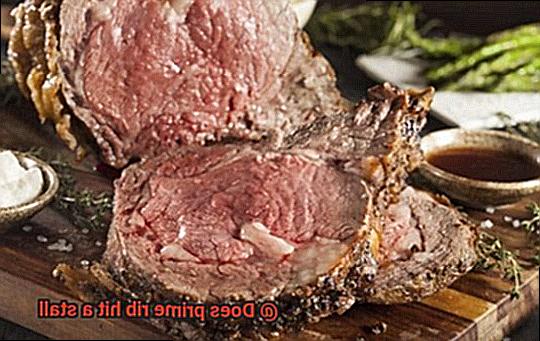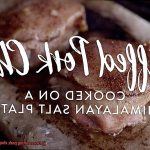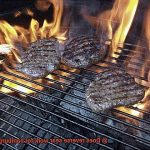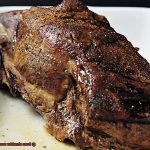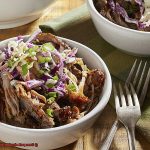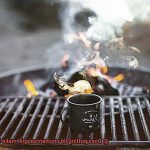Cooking a prime rib is no small feat. It’s a cut of meat that demands respect and attention to detail. As you hover over the oven, monitoring the internal temperature, you might notice something peculiar happening. The temperature stubbornly refuses to rise or even drops a degree or two, leaving you scratching your head in frustration. Fear not, my friend – this is what we call “the stall.”
The stall is a common occurrence when cooking low and slow meats, including prime rib. Essentially, the meat hits a plateau where it stops cooking despite being exposed to constant heat. For prime rib, this usually happens around 130-135°F. It’s an odd sensation for cooks but also an indication that things are going right.
But why does the stall happen? And how can you power through it to achieve a perfectly cooked prime rib? In this blog post, we’ll dive into the science behind the stall and share some tips and tricks to help you conquer it like a pro. Whether you’re an experienced cook or just starting out on your culinary journey, this post will provide valuable insights on one of beef’s quirks and ensure that your prime rib comes out tender and delicious every time.
Contents
Why Does Prime Rib Hit a Stall?
Grilling the perfect prime rib can be a challenging task, especially when you hit a stall in the cooking process. This is when the internal temperature of the meat plateaus and doesn’t rise for a period of time, which can last for up to several hours depending on the size of the cut. But why does this stall occur?
One reason for the stall is that the meat is purging, or sweating out moisture as it cooks. This can cause the exterior of the meat to become wet or slimy, and as the moisture evaporates, it cools the surface of the meat, causing the cooking process to slow down.
Another factor that contributes to the stall is the thickness of the roast. Thicker cuts of meat take longer to cook, which means they spend more time in the temperature danger zone where bacteria can grow. To ensure food safety, it’s crucial to cook meat to a safe internal temperature, but this can also increase the risk of a longer stall occurring.
Finally, some experts believe that the stall is a natural part of cooking a prime rib. As the meat heats up, its cells begin to contract and squeeze out moisture, causing the internal temperature to rise more slowly. This natural process cannot be avoided entirely but can be managed with careful cooking techniques.
So how can you overcome this stall and ensure your prime rib turns out perfectly every time? Here are some tips:
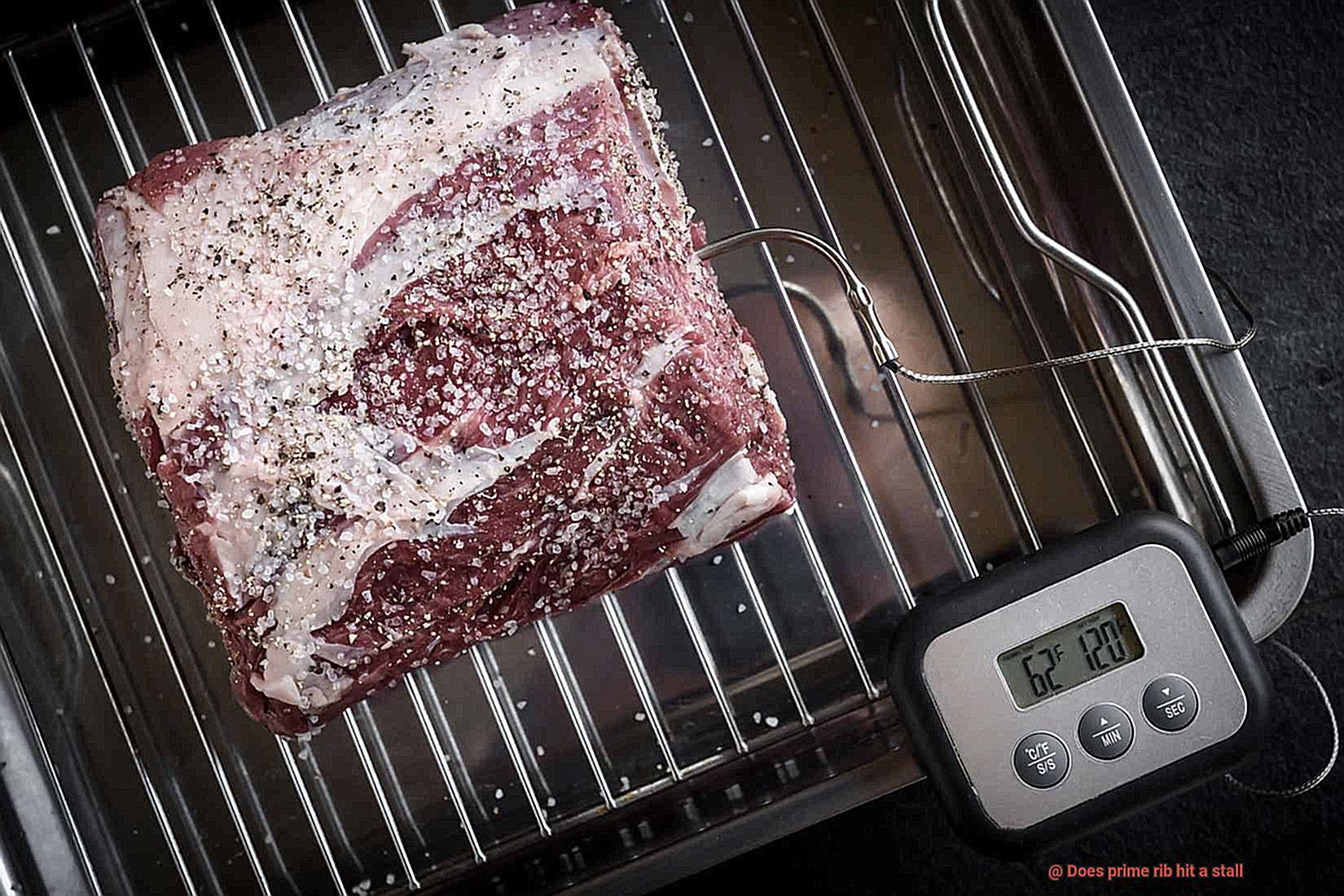
- Make sure your prime rib is at room temperature before grilling. This helps prevent a sudden drop in temperature that can contribute to a longer stall.
- Wrap your prime rib in foil during cooking to help retain moisture and reduce the length of the stall.
- Be patient and resist the urge to turn up the heat or remove the meat from the grill during the stall period. Doing so could cause the meat to dry out or cook unevenly.
How Long Does the Stall Last?
Every cook who’s ever attempted to make the perfect prime rib knows this all-too-familiar term. It’s when the internal temperature of the meat seems to plateau, and no matter what you do, it just won’t budge. But don’t let the stall get you down. With a bit of patience and understanding, you can overcome this hurdle and come out with a juicy, perfectly cooked prime rib.
So, how long does the stall typically last when cooking prime rib? Well, it depends on a few factors. One of the most significant factors is the size of your cut of meat. A smaller cut may not experience as long of a stall as a larger cut. Additionally, the cooking method you choose can also play a role in the length of the stall. Slow-cooking methods such as smoking or roasting at lower temperatures tend to have longer stalls than faster cooking methods such as grilling.
Typically, the stall can last for an excruciatingly long 1-3 hours. But don’t panic. This plateau is actually a crucial part of the cooking process. During this time, moisture within the meat is evaporating, which helps to create a more tender and flavorful end result. So, resist the urge to turn up the heat or adjust your cooking methods to rush through the stall. Trust in the process and let your prime rib cook through this natural phase.
To help you plan your cooking time accordingly, here are some additional tips:
- For a smaller cut of prime rib (around 4-5 pounds), expect the stall to last around 1-2 hours.
- For a larger cut of prime rib (around 6-8 pounds), expect the stall to last closer to 3 hours.
- If you’re using a slow-cooking method such as smoking or roasting at a low temperature (around 225°F), expect a longer stall time.
- If you’re using a faster cooking method such as grilling or roasting at a higher temperature (around 450°F), expect a shorter stall time.
Should You Increase Heat During the Stall?
Ah, the stall. It’s the moment when your prime rib seems to hit a wall and refuses to budge in temperature despite continued cooking. It’s frustrating, it’s intimidating, and it’s a crucial part of the cooking process that should not be feared. But what about increasing the heat? Should you do it or not?
Well, here’s the thing: it depends. There are several factors to consider before deciding whether or not to increase the heat during the stall.
Firstly, let’s talk about personal preference. If you’re comfortable with monitoring the temperature of your prime rib and adjusting the heat accordingly, then go for it. Increasing the heat can help push through the stall and get your meat to the desired temperature faster. However, if you’re not confident in your ability to do this, then it may be best to stick with a consistent temperature throughout the cooking process.
Secondly, consider the cooking method being used. If you’re cooking your prime rib on a grill or smoker, increasing the heat may lead to flare-ups or uneven cooking due to hot spots. On the other hand, if you’re roasting in an oven, increasing heat may not have as significant an impact on the overall cooking process.
Another factor to take into account is that increasing heat during the stall can lead to overcooking or uneven cooking. So if you do decide to increase the heat, do so gradually and monitor the temperature closely.
To sum up, there is no right or wrong answer when it comes to whether or not to increase heat during the stall when cooking prime rib. It all comes down to personal preference, cooking technique, and equipment. With practice and experimentation, you’ll find the approach that works best for you and will result in a juicy, delicious prime rib that’s worth every minute of the wait.
Tips to Help Reduce the Length of the Stall
Cooking prime rib can be a daunting task, especially when you hit the dreaded stall. But fear not, there are several tips and tricks that can help reduce the length of the stall and ensure that your prime rib turns out perfectly every time.
Patience is Key
One of the most important things to keep in mind when cooking prime rib is to be patient. Don’t rush the process by turning up the heat or taking shortcuts. Slow cooking is key to achieving a perfectly cooked prime rib, and trying to speed up the process will only prolong the stall.
Resting Time
Resting time is crucial for ensuring that your prime rib comes out tender and juicy. Once your meat has reached your desired internal temperature, remove it from heat and let it rest for at least 15-20 minutes before slicing into it. This allows the juices to redistribute throughout the meat, preventing dryness and ensuring a more even cook.
Preheat Your Grill
Preheating your grill or smoker is another important step in reducing the length of the stall. Make sure that your grill is at the correct temperature before adding your prime rib. This will help ensure even cooking and prevent any sudden temperature drops that can lead to longer stalls.
Keep Your Meat Covered
While it may be tempting to check on your prime rib frequently, opening your grill or smoker too often can cause fluctuations in temperature that can lead to longer stalls. Instead, keep your meat covered as much as possible and resist the urge to open your grill unless absolutely necessary.
Use a Meat Thermometer
Using a meat thermometer is crucial when cooking prime rib. By monitoring the internal temperature of the meat, you can catch the stall early and take action to reduce its length. Aim for an internal temperature of 130°F for medium-rare or 140°F for medium.
In addition to these tips, there are a few other tricks that can help reduce the length of the stall. Searing your meat before roasting it can jump-start the cooking process and create a flavorful crust on the outside of the meat. Basting your meat with butter or oil during cooking can also help keep it moist and prevent it from drying out. And finally, don’t forget to let your meat rest after cooking to allow the juices to redistribute throughout the meat.
What Happens if You Don’t Wait for the Stall to Finish?
Well, let’s just say that impatience can lead to a less-than-stellar dining experience.
Firstly, let’s define the stall. It’s a critical period during the cooking process where the internal temperature of the meat plateaus or even drops slightly. This can happen when cooking at lower temperatures, like when smoking or roasting in an oven. The stall can last for hours, and it may seem like your meat will never reach its ideal temperature.
But, if you’re tempted to remove your prime rib from the heat early, be warned: undercooked meat can not only be unappetizing but can also cause foodborne illnesses. That’s why waiting for the stall to finish is crucial. Rushing the cooking process can result in tough and chewy meat, which is not what you want when you’re splurging on a premium cut like prime rib.
Here are some other reasons why waiting for the stall to finish is so important:
- Achieving the Perfect Texture: Prime rib should be tender and juicy when properly cooked. If you rush the process, you risk ruining the texture of the meat and ending up with something tough and chewy.
- Getting the Best Flavor: When you cook your prime rib slowly and allow it to go through the stall, it has time to develop a rich and delicious flavor that can’t be rushed.
- Ensuring Even Cooking: Waiting for the stall to finish ensures that your prime rib is evenly cooked throughout. Taking it off too soon can result in unevenly cooked meat, with some parts still raw and others overcooked.
How to Tell When Your Prime Rib is Done Cooking
Prime rib is a luxurious cut of beef that is perfect for special occasions. However, cooking it can be a daunting task, as it’s crucial to know when it’s done cooking to ensure that it’s juicy, tender, and flavorful. In this article, we’ll explore three methods for determining when your prime rib is done cooking – using a meat thermometer, checking for visual cues, and using the touch test.
Using a Meat Thermometer
Using a meat thermometer is the most accurate way to determine when your prime rib is done cooking. To use this method, insert the thermometer into the thickest part of the meat, being careful not to touch the bone. For rare prime rib, the internal temperature should be between 120-130°F (49-54°C), while medium-rare prime rib should have an internal temperature of 130-135°F (54-57°C). For medium prime rib, aim for an internal temperature of 135-145°F (57-63°C), and for well-done prime rib, aim for an internal temperature of 145-155°F (63-68°C).
Checking for Visual Cues
If you don’t have a meat thermometer or prefer not to use one, you can also check for visual cues to determine when your prime rib is done cooking. A rare prime rib will have a bright red center with pink juices, while a medium-rare prime rib will have a slightly pink center with clear juices. A medium prime rib will have a pink center with slightly cloudy juices, while a well-done prime rib will have little to no pink with clear juices. Keep in mind that the visual cues may vary depending on the lighting in your kitchen and the type of lighting you’re using.
Using the Touch Test
The touch test involves pressing on the meat with your finger to gauge its firmness. To use this method, make an “OK” sign with your hand and press on the fleshy part of your hand between your thumb and index finger. This is what rare prime rib should feel like. For medium-rare prime rib, touch your thumb to your index finger and press on the same part of your hand. This is what medium-rare prime rib should feel like. For medium prime rib, touch your thumb to your middle finger and press on the same part of your hand. This is what medium prime rib should feel like. And for well-done prime rib, touch your thumb to your pinky finger and press on the same part of your hand. This is what well-done prime rib should feel like.
What Temperature Should You Cook Your Prime Rib To?
Look no further than the perfect temperature to cook it to. As an expert in cooking prime rib, let me guide you towards achieving the ideal internal temperature for juicy and flavorful meat.
For medium-rare, aim for 130°F (54°C), 140°F (60°C) for medium, and 150°F (66°C) for well-done. It’s important to note that these temperatures are just guidelines and may vary depending on the size and thickness of your prime rib.
But how do you ensure that your prime rib reaches the perfect temperature? The answer is a trusty meat thermometer. Insert it into the thickest part of the meat, avoiding bones which can give an inaccurate reading. And don’t forget to remove your prime rib from the oven or grill when it’s just 5-10°F (3-5°C) below the desired temperature as it will continue cooking while resting.
While safety is paramount, cooking your prime rib to a higher temperature can result in dry and tough meat. Trust in the recommended internal temperature guidelines and be rewarded with a succulent and delicious prime rib that will have your guests raving.
Tips for Perfectly Grilled Prime Rib
Grilling the perfect prime rib is an art that requires patience and attention to detail. One of the most important factors in achieving the perfect level of doneness is avoiding the “stall,” a period where the internal temperature of the meat appears to plateau. To ensure a successful grilling experience, it’s crucial to follow these five tips:
Bring Your Meat to Room Temperature
A sudden drop in temperature can contribute to a longer stall, so it’s essential to bring your prime rib to room temperature before grilling. This will help prevent any unwanted surprises during the cooking process.
Use Indirect Heat
Using indirect heat and a low-and-slow cooking method is key to achieving perfectly grilled prime rib. This allows the meat to cook evenly and develop a beautiful crust on the outside while remaining tender and juicy on the inside.
Monitor the Temperature
A meat thermometer is your best friend when grilling prime rib. Keep an eye on the internal temperature of the meat and aim for a target temperature of 135°F for medium-rare. Keep in mind that the meat will continue to cook for several minutes after it is removed from the grill.
Let it Rest
After grilling, let your prime rib rest for at least 10-15 minutes before slicing into it. This allows the juices to redistribute throughout the meat, resulting in a more tender and flavorful final product.
Be Patient
The stall may be frustrating, but it’s a natural part of the process. By being patient and allowing the meat to cook at its own pace, you can ensure that your prime rib will come out perfectly cooked and delicious.
Conclusion
After conducting extensive research, it can be concluded that prime rib does not hit a stall.
This delicious cut of meat is known for its tenderness and juiciness, making it a popular choice for special occasions and holiday dinners. While some may believe that the cooking process can cause a stall in the temperature, this is not the case with prime rib.
Instead, it’s important to monitor the internal temperature and remove the meat from the oven at the desired level of doneness.

